Five rhinoceros species (within which are eleven subspecies) still walk “our” planet’s surface.
All are in trouble; their total number is lower than ever before in human history, and they now walk “freely” only within a tiny portion of their former range, in discrete populations in various National Parks and “Reserves”.
Diceros bicornis, commonly known as the “black” rhino, is the smaller, now rarer – and allegedly, more ornery – of the two African species.
It and Ceratotherium simum – the so-called “white” rhino – are in fact both grey.
The fifth night of November 2022 was a good one for rhino-watchers at the Okaukuejo waterhole; the rhinos’ demeanour was not at all ornery, and they broke only wind – loudly.
After more than a century of catastrophic decline, black rhino numbers have been moving in “the right direction” in recent years, most especially in Namibia.
A visitor to Etosha is highly likely to see some, with horns intact.
The visitor ought remember, however, that this species’ conservation status is still “critically endangered”.
It is good news that “black” rhino numbers are now increasing, but the current estimated grand total of circa 6,200 individuals only amounts to circa one percent of the estimated number in 1900.
In pre-colonial times they ranged across very much more of Southern Africa.
Not until well into the 20th century did “black” rhinos become rhinos’ rarer African species.
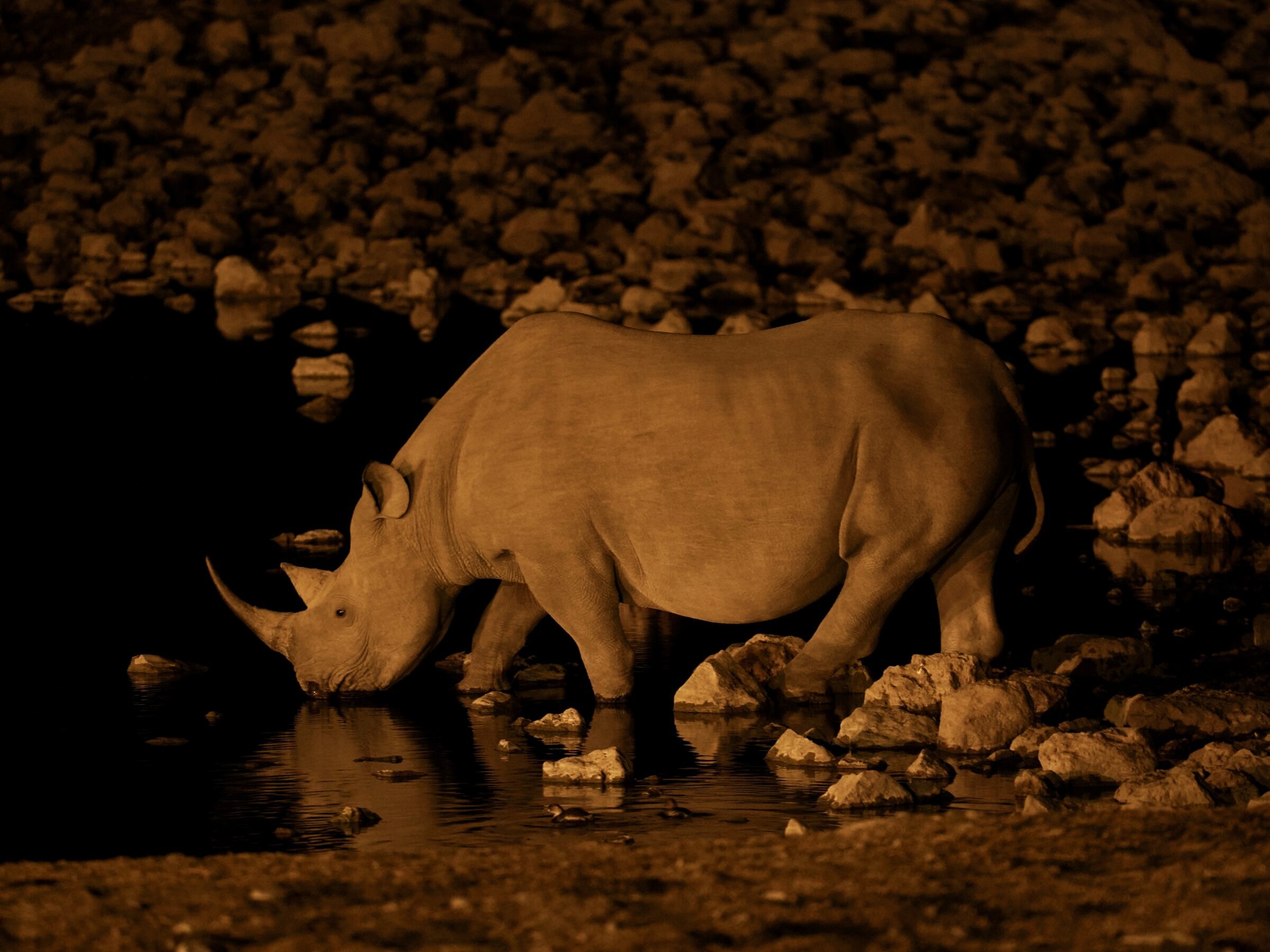
Q: why were “black” and “white” rhinos so misleadingly named?
A: probably, because arrogant Englishmen were so careless with other peoples’ languages.
Afrikaans-speaking observers had noticed and accurately described the key, obvious difference between Africa’s two rhino species.
The larger one was a grazer; its wider, “square” upper lip is designed for nibbling grasses.
In Afrikaans, “wyd” means “wide”.
An Afrikaans word’s final “d” sounds like an English “t”.
Not a few English-speaking southern Africans once had – and some still do have – a decidedly patronising/condescending attitude to Afrikaners; I have directly witnessed more than a little of this behaviour, most especially in 1971, when I lived in South Africa as an exchange student.
I find it very easy to believe that “wyd” was misconstrued as “white” and that the rooineks then called the other kind of rhino “black”, in order to distinguish it from the “white” one.
(“rooinek” – meaning “redneck” – is a usually-derisory tag applied by Afrikaners to “English” compatriots…prejudice and misunderstandings, of course, flow in more than one direction)
Today, there is a push to replace Africa’s two remaining rhinos’ silly, misleading names with accurate ones; the larger, grazing rhino and the smaller, browsing rhino would then become known, respectively, as the “square-lipped” and the “hooked-lipped” rhino.
At least one feathered African species – the one you can see below, immediately in front of the rhino cow – is also overdue for a change of common name.
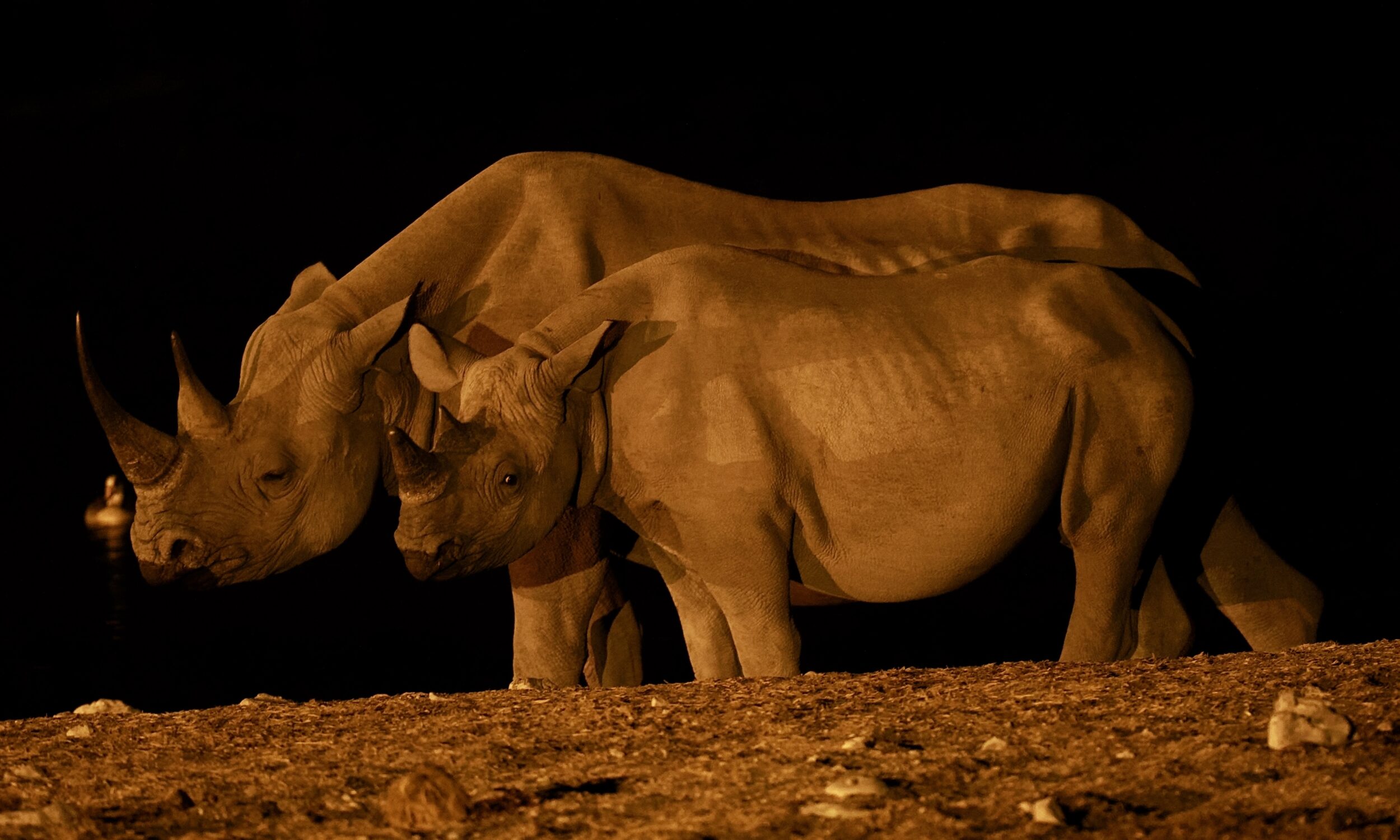
Alopochen aegyptiaca – the so-called “Egyptian goose” – is in fact a duck.
Egypt (its Nile Valley region, actually) accounts for a tiny portion of its African range, which extends across just about everywhere south of the Sahara where surface water is readily available.
Click here to learn about the goose that isn’t.
Click this for a snappy roundup of “facts” about the “black” rhino, or this for a more detailed account.
As more information is gathered, more reliably, some animal “facts” lose their “factual” status.
For example, recent studies suggest that “black” rhinos’ proverbially “dreadful” eyesight is rather better than had been assumed. That said, their sense of smell is definitely much keener than their eyesight.
As to “black” rhinos’ allegedly “solitary” nature and their “orneriness”…closer study suggests that their behaviour varies widely, from one individual to another, and/or according to particular, local circumstance.
Many adult males do lead a mostly-solitary life, but some are at least sometimes “sociable”.
A cow and her offspring often continue to associate with each other long after the period of “maternal duty/necessity” or “a calf’s dependency” has expired.
At no point on the night of 05 November did this post’s “adolescent” show any behaviour that suggested s/he was still suckling, or that s/he wanted to suckle.
It was, however, abundantly evident that these two individuals were very comfortable, “hanging out, together, still”.
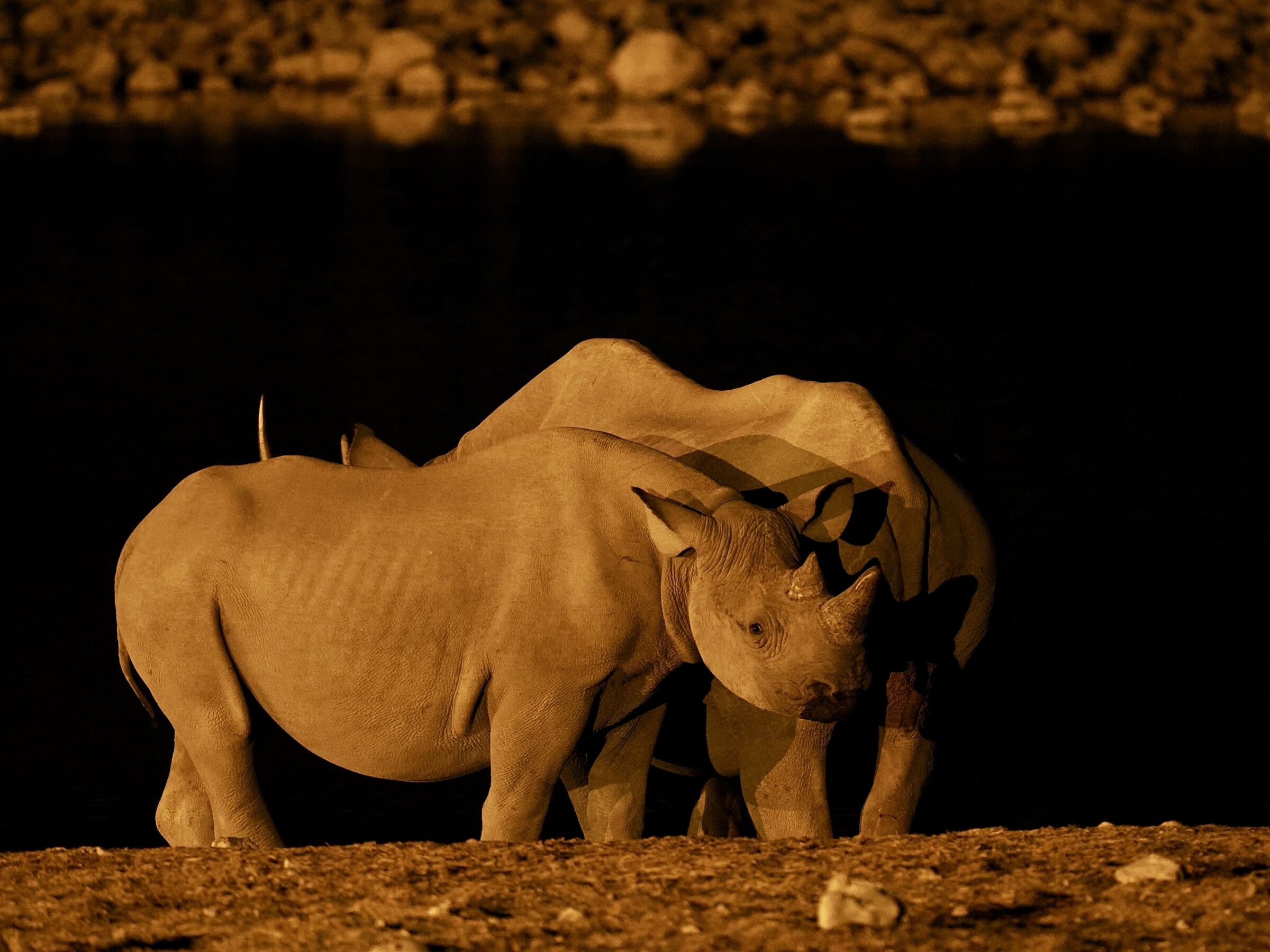
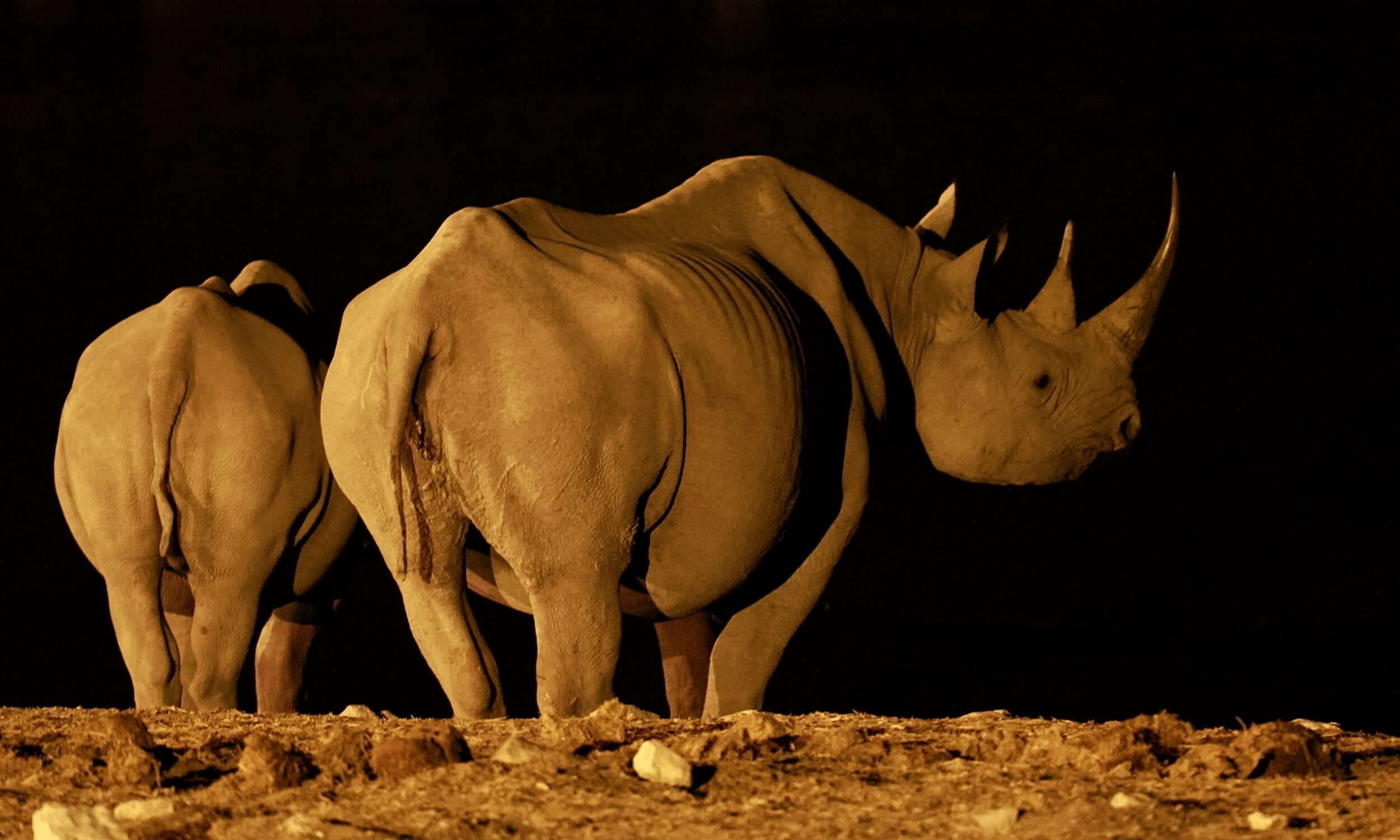
Generally, “black” rhinos’ behaviour is not very territorial.
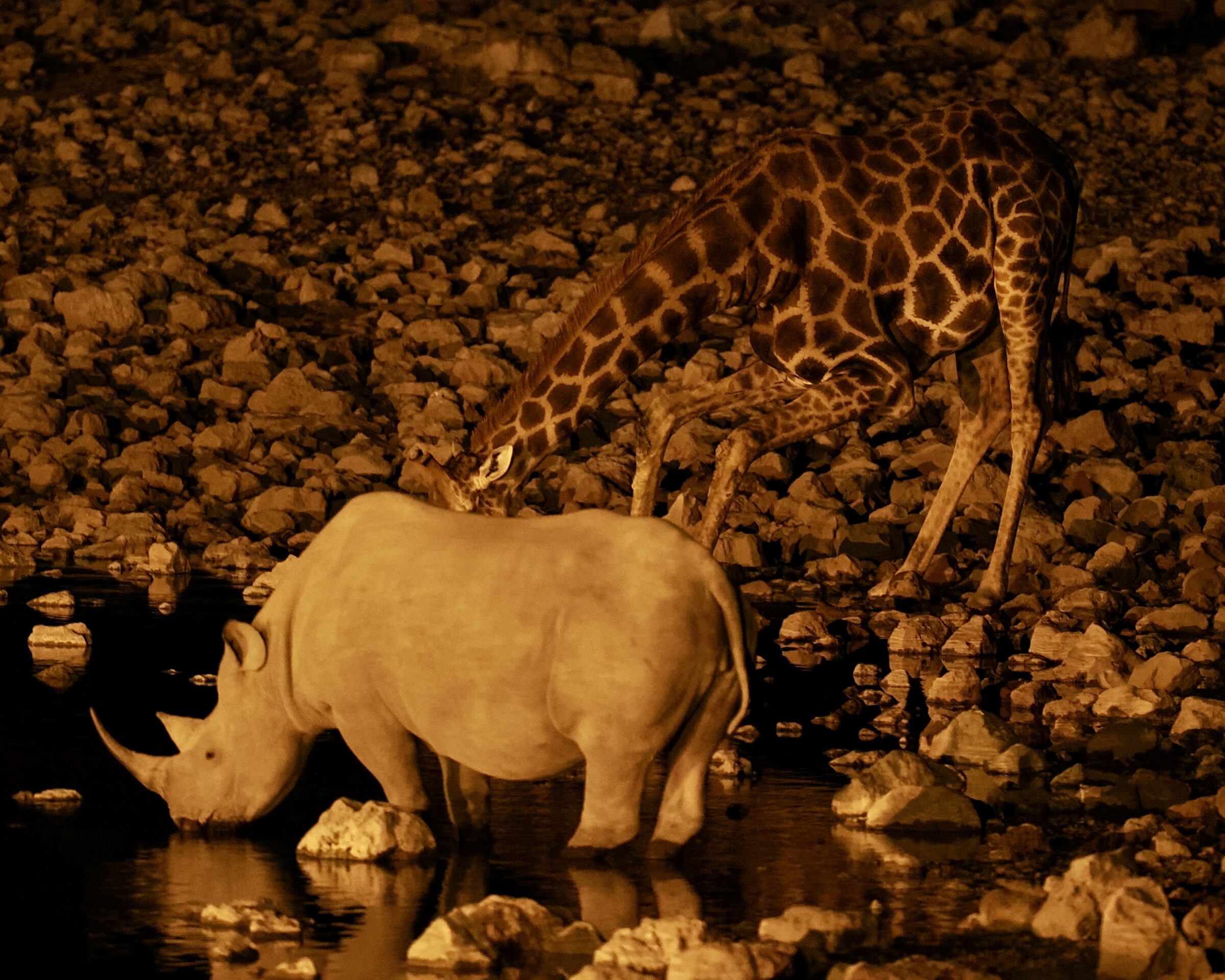
Photographically, the tallest drinkers proved the most rewarding nighttime visitors to Okaukuejo waterhole…as you will see in this little trilogy’s final chapter.
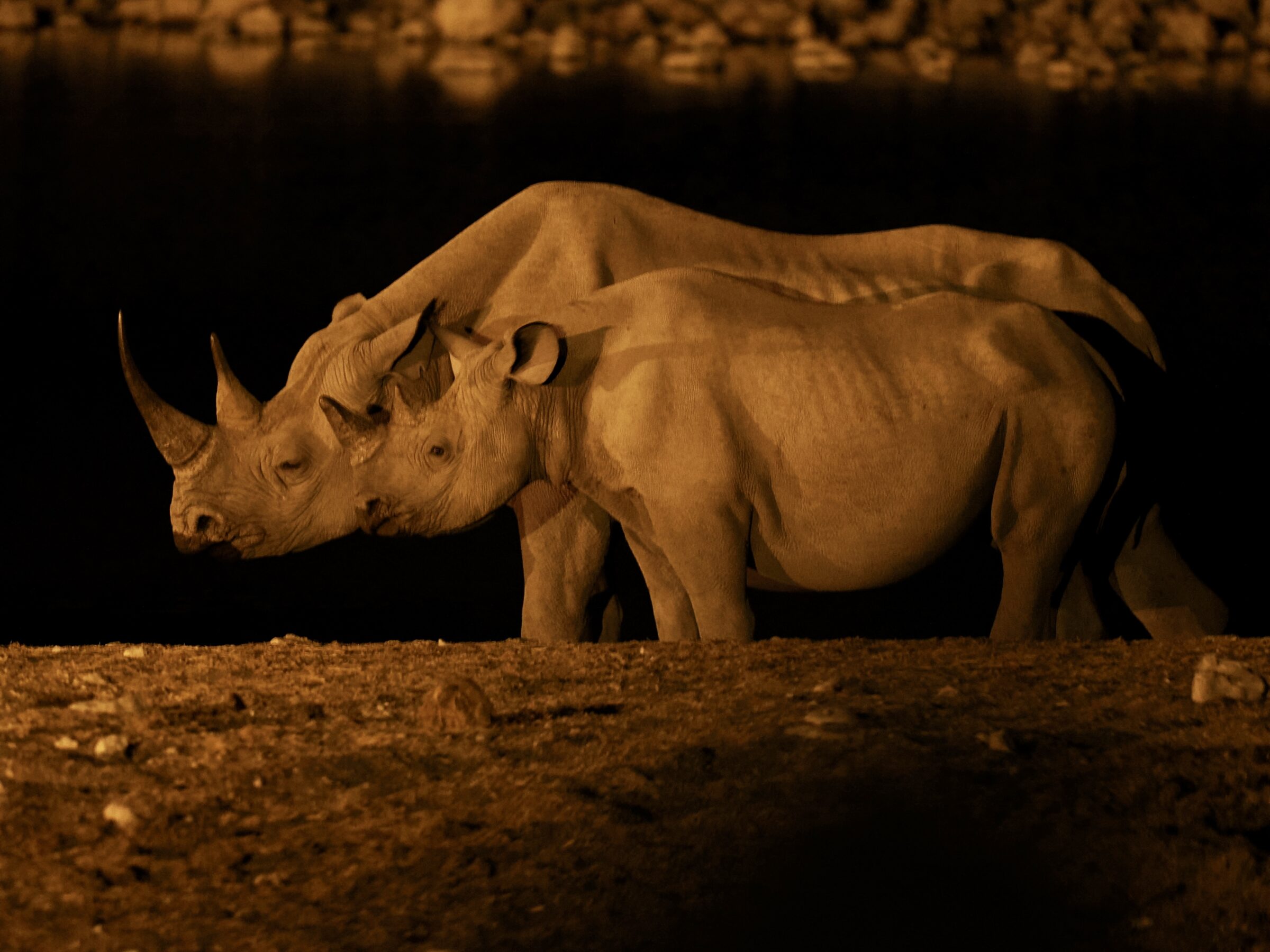
Very informative blog. Thanks Doug.
Wonderful pics of night viewing.
Interesting in the last pic to see the stance of the giraffe when drinking. Usually their legs are splayed as they lean down to drink.